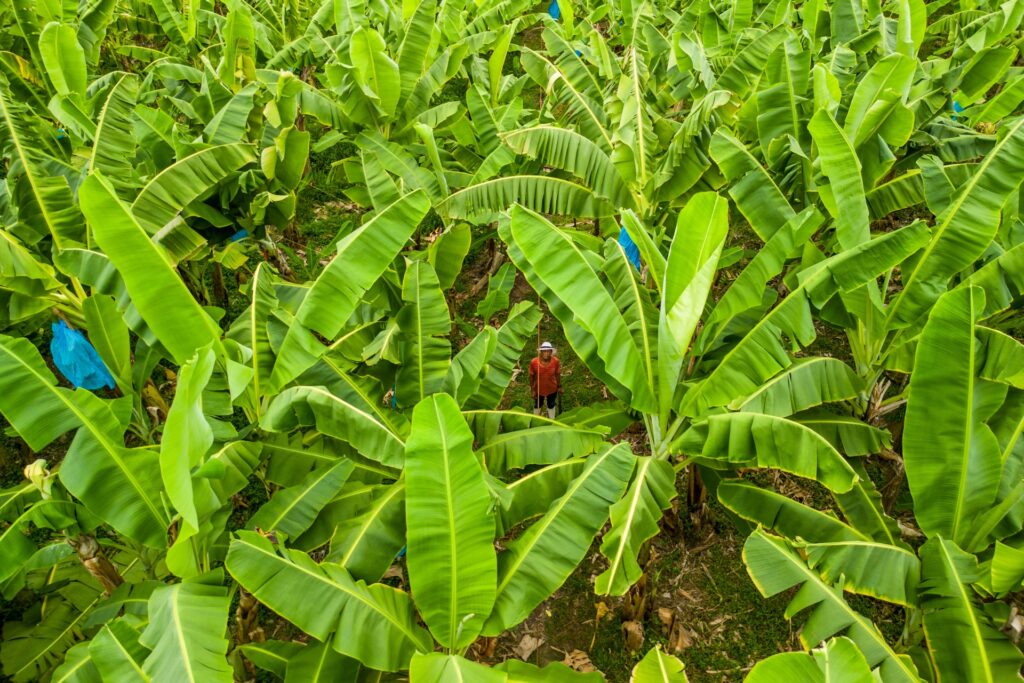At Fairtrade, we have a vision to ensure that the people who produce the goods and food we consume have the resources to flourish, both in times of stability and times of crisis. At the heart of this vision is our deep-rooted commitment to living wages.
What is a living wage?
A living wage is a wage that covers the basic needs of workers and their families, including food, clothing, shelter, healthcare, education, transport to work and a little extra for unforeseen circumstances.
What does closing the living wage gap mean?
‘Closing the living wage gap’ means reducing the difference between the living wage and what workers are currently paid. This can be done by paying Fairtrade Living Wage Reference Prices, or through the temporary allocation of Fairtrade Premium – the extra sum of money to invest in improving the quality of the lives of producers – received as a bonus that brings immediate worker benefits.
How are living wage gaps calculated?
Living wage gaps are calculated by comparing what workers are currently paid with independently validated living wage benchmarks. The IDH Salary Matrix is a digital tool to help calculate living wage gaps.
How does Fairtrade provide a framework to close the living wage gap?
Fairtrade’s approach is that each stage of the supply chain should contribute to a living wage for plantation workers. Together we can contribute to Sustainable Development Goal 8 of decent work for all women and men, and equal pay for work of equal value.
Why do living wages matter?
The need for a living wage has always been pressing in the banana sector because workers are among the most vulnerable people in global trade. Without access to land or unable to make a living from it, they have few options for a sustainable livelihood.
Banana workers often lack formal contracts, freedom of association, basic health and safety assurances, and adequate wages, among other challenges. Many are not unionised e.g. in Dominican Republic, Peru, Ecuador. There is also a low awareness of workers’ rights. Workers face strenuous work and poor living conditions. Migrant workers are particularly vulnerable.
How much does the average banana worker earn?
The Global Living Wage Coalition publishes benchmarks for living wages for banana workers, which are available here:
https://www.globallivingwage.org/industries/bananas/
The Fairtrade Base Wage is set at 70 percent of the take-home pay needed for a living wage, as per these benchmarks. Examples of the way in which Fairtrade Minimum Price, Fairtrade Premium, and living wage differentials work together to reach living wages per box of bananas purchased are available here:
Banana Price Review: with new Fairtrade Living Wage Reference Price calculator
Why do long term contracts matter?
Normally banana contracts are renegotiated every year. Long term contracts provide producers with stability and the ability to plan for the future, and we encourage our partners to implement these
Why doesn’t Fairtrade just focus on investing in supporting trade unions to improve worker wages?
Fairtrade recognises that long term sectoral change is urgently needed for banana workers. Our shared ambition is for living wages to be locked in through fairer prices, collective bargaining agreements, decent work, and long-term contracts so that workers can benefit from improved earnings in a way that is sustainable, long-lasting and which helps them plan for their futures. That’s why we’re working together to deliver living wages at scale, supporting compliance with HREDD (human rights and environmental due diligence) and driving sector leading change.
